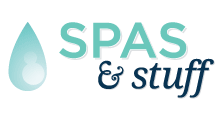"More Truth About Microban® and Anti-Microbial Agents in Acrylic Sheet"
Reprinted with permission from Aristech Acrylics LLC. Original article can be found here .
"More Truth About Microban® and Anti-Microbial Agents in Acrylic Sheet"
Microban® is a pesticide that an acrylic sheet producer has added to its product for bath and hot tub surfaces. The company is insinuating and implying health and cleaning benefits that haven’t been proven. In fact, new scientific evidence indicates that there is no difference between untreated acrylic sheet and acrylic sheet made with Microban in killing or inhibiting the growth of bacteria on the respective surfaces.
What is Microban?
Microban is a registered pesticide made by the Microban Products Company of Huntersville, N.C. Its primary ingredient is a chemical called triclosan, which, in its liquid form, has been used as a disinfectant in hospitals for over 25 years. In 1980, three biochemical engineers invented a process to imbed the pesticide into the structure of plastics. This became the technology upon which Microban would be based, and in 1990, the Microban Products Company was formed. Since that time, Microban additives have been incorporated into a variety of consumer and commercial products.
Does Microban kill or slow the growth of bacteria when used in acrylic sheet?
No. A study was conducted by SGS U. S. Testing Company Inc., an independent laboratory in Fairfield, N. J. Completed in January of 2000, the tests indicate that there is no difference between untreated acrylic sheet and acrylic sheet made with Microban in killing or slowing the growth of bacteria on the respective surfaces.
How was the new study conducted?
Samples of manufactured bathtubs that contain both the untreated and treated acrylic sheets were purchased from retail establishments and cut into samples. Each sample was exposed to strains of bacteria, including Escherichia coli (E. coli), Staphylococcus aureus (S. aureus), and Streptococcus faecalis (S. faecalis). The acrylic samples sat for periods of 0, 4 and 24 hours. The bacteria were then removed from the acrylic surfaces and measured and counted according to standard protocol.
What are the results of the study?
Specifically, SGS U. S. Testing Company concluded that the samples of untreated and treated acrylic sheets “did not show any anti-microbial activity (0% bacterial reduction) at 4 or 24 hours against” E. coli, S. aureus, and S. faecalis.
Is a bath or hot tub made with Microban “healthier?”
Absolutely not. In fact, manufacturers of Microban-treated acrylic sheet are not allowed by law to even imply that they are. The United States Environmental Protection Agency (EPA) will not allow Microban Products Company, or any of its customers, to make claims regarding health benefits, such as protection from germs or disease prevention. Why? Because there is no specific evidence that any of the products treated with Microban are effective in preventing the spread of bacteria or disease.
Do hot tubs and baths treated with Microban need to be cleaned?
Absolutely. Materials with Microban still need normal and frequent cleaning and disinfecting. Microban does not protect against hard water film buildup or stains, or soap scum residue. Also, the presence of Microban does not reduce the need or amount of sanitizers needed in a hot tub’s water.
In fact, a hot tub or bath treated with Microban needs exactly the same level of maintenance and cleaning as one that is not treated with Microban.
Does Microban make acrylic easier to clean, last longer, or look newer longer?
There is no published evidence that shows Microban makes acrylic sheet easier to clean, last longer, or look newer longer.
Why? Because acrylic sheet is already one of the most durable, long-lasting, and beautiful materials used in the hot tub and bath markets.
What benefit does Microban add to acrylic hot tubs and baths?
Strictly speaking, acrylic sheet treated with Microban offers customers and consumers no benefits that are not inherently part of the acrylic material. There is no proof that anti-microbial agents incorporated into acrylic sheet products provide any health benefits whatsoever. And now, there is specific scientific evidence that indeed Microban does not provide any antibacterial benefit when used in acrylic sheet.
What do expert scientists say about adding Microban to consumer goods?
Several noted microbiologists have said that adding Microban to many consumer goods is unnecessary, and some have even called it a “marketing gimmick.”
Not only have experts said that the benefits of Microban are questionable, but many are also concerned that the wide-spread use of these substances may cause a major public health problem. Researchers are concerned that repeated use of products containing triclosan could be breeding resistant bacteria, or “superbugs.” A 1998 Tufts University study showed that over-exposure created five different triclosan-resistant strains of E. coli. According to Tufts’ Dr. Stuart Levy, “If the idea is to sterilize surfaces, it is misguided. You can’t sterilize surfaces that are open to the air. You will not eliminate bacteria, but rather replace them with other micro-organisms which could be potentially harmful.”
The truth is...Continuous cast acrylic has served as the premier surface for millions of hot tubs and baths sold in North America over the past 20 years. Acrylic has a proven track record of retaining its beauty and high-gloss shine through years of everyday use. Acrylic is extremely hard and non-porous by nature. So, dirt, soapy film, and germs can’t easily penetrate. Untreated, it is the material of choice for quality baths and hot tubs.
For any questions or a copy of "More Truth About Microban® and Anti-Microbial Agents in Acrylic Sheet", call Aristech Acrylics LLC at 1-800-354-9858.
Microban is a registered trademark of Microban Products Company.













